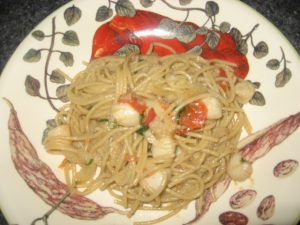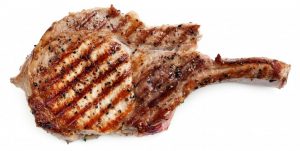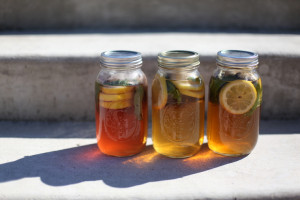Food safety friend Lynn McMullen at the University of Alberta, and others have found that cooking ground beef at 71C — the level of heat long advised by Health Canada — does not always eliminate all the strains of Escherichia coli.
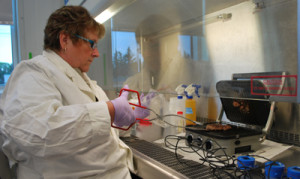 “We’ve been hammering consumers for years to cook chicken properly, to handle it properly, and to do the same with ground beef but still we seem to have these outbreaks of E. coli (attributed to hamburgers),” said food microbiologist McMullen.
“We’ve been hammering consumers for years to cook chicken properly, to handle it properly, and to do the same with ground beef but still we seem to have these outbreaks of E. coli (attributed to hamburgers),” said food microbiologist McMullen.
“Does this explain why? It might.”
McMullen, fellow food microbiologist Michael Gänzle, and several graduate students, first became aware of the inconsistent behaviour of E. coli eight years ago.
For decades, scientific papers about the thermal killing of microorganisms have noted that there were sometimes survivors. But little attention was paid to that information until 2008, when McMullen and Gänzle assigned a student to look for differences in thermal survival amongst organisms in a large collection of E. coli from beef, which the U of A happens to house.
The first student, Elena Dlusskaya, showed that one organism had survived for 70 minutes at 60C. Both professors felt her study must be flawed, because most E. coli are killed just a few seconds after such heat application. Repeating her experiments twice produced the same odd results.
Then Dlusskaya compared her cultures to those from other labs, which already had published survival values. Again, she found that some of the U of A’s cultures were behaving differently.
“These organisms aren’t supposed to survive, but every once in a while they do,” said McMullen. “So we decided to find out why. We looked at the genomes to see what was different.”
Working with postdoctoral fellow Ryan Mercer, they discovered a suite of 16 genes that are found only in the highly heat-resistant strains of E. coli under wet conditions (i.e. fresh meat). This genomic grouping is called the locus of heat resistance, or LHR.
Hunting through the genome databases for LHR, they saw that it exists in about two per cent of all E. coli in the databases and is present in both the harmless and pathogenic strains.
 “If it’s in two per cent of all E. coli, and in pathogenic E.coli, there’s the potential that a pathogen could survive the standard cooking protocols for ground beef. It could mean we have to change the guidelines for cooking meat, because 71C may not be enough.”
“If it’s in two per cent of all E. coli, and in pathogenic E.coli, there’s the potential that a pathogen could survive the standard cooking protocols for ground beef. It could mean we have to change the guidelines for cooking meat, because 71C may not be enough.”
Salt also makes E. coli bacteria heat resistant, though McMullen and the other researchers don’t know why.
Though McMullen and the other researchers haven’t discovered what temperature will ultimately kill all E. coli, McMullen recommended using a thermometer and cooking meat at 71 C to 73 C. “It doesn’t matter when you’re grilling any ground meat, you should be using a thermometer.”
Genetic determinants of heat resistance in Escherichia coli
Front Microbiol. 2015; 6: 932.
Published online 2015 Sep 9. doi: 10.3389/fmicb.2015.00932
Ryan G. Mercer, Jinshui Zheng, Rigoberto Garcia-Hernandez, Lifang Ruan, Michael G. Gänzle, and Lynn M. McMullen
http://www.ncbi.nlm.nih.gov/pmc/articles/PMC4563881/
Escherichia coli AW1.7 is a heat resistant food isolate and the occurrence of pathogenic strains with comparable heat resistance may pose a risk to food safety. To identify the genetic determinants of heat resistance, 29 strains of E. coli that differed in their of heat resistance were analyzed by comparative genomics. Strains were classified as highly heat resistant strains, exhibiting a D60-value of more than 6 min; moderately heat resistant strains, exhibiting a D60-value of more than 1 min; or as heat sensitive. A ~14 kb genomic island containing 16 predicted open reading frames encoding putative heat shock proteins and proteases was identified only in highly heat resistant strains. The genomic island was termed the locus of heat resistance (LHR). This putative operon is flanked by mobile elements and possesses >99% sequence identity to genomic islands contributing to heat resistance in Cronobacter sakazakii and Klebsiella pneumoniae. An additional 41 LHR sequences with >87% sequence identity were identified in 11 different species of β- and γ-proteobacteria. Cloning of the full length LHR conferred high heat resistance to the heat sensitive E. coli AW1.7ΔpHR1 and DH5α. The presence of the LHR correlates perfectly to heat resistance in several species of Enterobacteriaceae and occurs at a frequency of 2% of all E. coli genomes, including pathogenic strains. This study suggests the LHR has been laterally exchanged among the β- and γ-proteobacteria and is a reliable indicator of high heat resistance in E. coli.
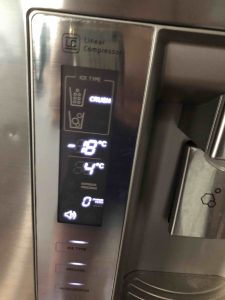 The fridge also has an ice and water dispenser, which I used to have but lost in the divorce or move(s), it’s all a blur now.
The fridge also has an ice and water dispenser, which I used to have but lost in the divorce or move(s), it’s all a blur now.
